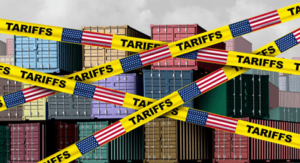
BRICS Blockchain-Based Payment System
BRICS Blockchain represents a groundbreaking initiative by the BRICS nations to challenge the traditional global financial order and reduce their dependency on the US dollar. Through the development of an independent payment system utilizing blockchain technology, the BRICS countries—bolstered by new members like Saudi Arabia—are working towards creating their own digital currency.
This ambitious project, referred to as the “Contingent Reserve Arrangement,” aims to enhance the international monetary and financial system’s efficiency and inclusivity. Spearheaded by efforts to increase transactions in national currencies and the creation of the BRICS Bridge payment platform, this move signifies a significant shift towards de-dollarization and increased financial sovereignty for the member states.
BRICS Blockchain-Based Payment System
The BRICS nations (Brazil, Russia, India, China, and South Africa), with the recent addition of countries such as Saudi Arabia, are setting the stage for a seismic shift in the global financial system.
Their initiative to develop a BRICS Blockchain-based payment system is not just a statement of independence from the established world order but a strategic move toward de-dollarization.
This system, underscored by the principles of technological innovation and political neutrality, aims to redefine international trade and monetary transactions.
Here’s an in-depth look at this groundbreaking development.
Table of Contents
1. Redefining Global Financial Dynamics
The creation of a BRICS blockchain-based payment system, known as the BRICS Blockchain, represents a pivotal moment in the global financial sitiation.
With countries increasingly wary of the U.S. dollar’s dominance and the political strings attached to its use, BRICS is leading the charge toward a more decentralized and equitable financial system.
The initiative is a testament to the group’s rising influence and its commitment to fostering financial independence and sustainability among its members and potentially beyond.
Read More: Role of BRICS in De-dollarization
2. Technological Innovation at the Core
At the heart of this ambitious project is the utilization of blockchain technology and digital currencies. These technologies offer a secure, transparent, and efficient means of conducting transactions, free from the vulnerabilities and constraints of traditional financial systems.
By leveraging blockchain, BRICS aims to create a payment system that not only enhances the security and efficiency of cross-border transactions but also fosters trust among its users by ensuring a decentralized and tamper-proof record of all transactions.
The integration of BRICS Blockchain further strengthens this initiative, providing a robust foundation for collaboration and innovation within the consortium.
3. A Step Towards De-dollarization
The move by BRICS to develop its own payment system, known as the BRICS Blockchain, is a clear step toward reducing the reliance on the U.S. dollar in international settlements. This reflects a growing trend of de-dollarization, driven by the desire to mitigate exposure to U.S. monetary policy and political decisions.
By promoting transactions in national currencies and developing an alternative payment system, BRICS is not only enhancing its financial sovereignty but also challenging the traditional dollar-centric model of global trade.
Read More: Irony of American-Chinese Economic Relations
4. Inclusivity and Accessibility
A key aspect of the BRICS payment system, including the BRICS Blockchain, is its focus on inclusivity and accessibility. Aimed at governments, businesses, and individuals alike, the system is designed to be user-friendly, cost-effective, and politically neutral.
This inclusivity ensures that the benefits of the system—such as lower transaction costs and reduced reliance on Western financial infrastructure—are accessible to a broad spectrum of users, potentially transforming the way international trade and financial transactions are conducted.
5. The Road Ahead
While the development of the BRICS Blockchain-based payment system is a monumental undertaking, it is but one part of a larger strategy to enhance the role of BRICS nations in the global monetary and financial system.
The integration of the BRICS Blockchain into the broader economic policies of member states, coupled with ongoing efforts to increase settlements in national currencies, signifies a concerted effort to reshape the global financial architecture.
Potential Challenges and Global Impact
The BRICS payment system, while promising, encounters numerous hurdles. Technological barriers, regulatory complexities, and the imperative of international adoption pose significant challenges.
Success of the system carries profound implications, potentially reshaping global trade dynamics, currency valuations, and geopolitical alignments. Overcoming these obstacles demands concerted efforts from member nations and strategic partnerships.
If realized, the system could foster greater economic autonomy for BRICS nations and reduce dependency on traditional financial networks. However, its impact extends beyond the consortium, potentially altering the balance of power in the global economy.
Navigating these challenges requires foresight, cooperation, and adaptability to ensure the system’s viability and its ability to shape the future of international finance.
A Game Changer for International Finance
The BRICS nations are on the brink of launching a groundbreaking blockchain-based payment system, capturing global attention. This initiative promises to revolutionize financial autonomy for developing economies while disrupting traditional global finance norms.
By prioritizing security, efficiency, and independence from political sway, BRICS charts a course toward reshaping international trade and monetary policy paradigms. The success of this endeavor holds the potential to redefine the dynamics of economic power and influence on a global scale.
As anticipation mounts, observers worldwide keenly monitor the progress, recognizing the pivotal role this innovation could play in shaping the future economic situation of financial transactions and governance.
Bottom Line
The BRICS blockchain-based payment system represents a bold leap toward redefining the global financial order. By prioritizing technological innovation, inclusivity, and political neutrality, BRICS is not only challenging the dominance of the U.S. dollar but also offering a glimpse into a future where financial transactions are more secure, efficient, and equitable. As this initiative progresses, it has the potential to significantly alter the dynamics of international trade and economic cooperation, signaling a new chapter in the story of global finance.





